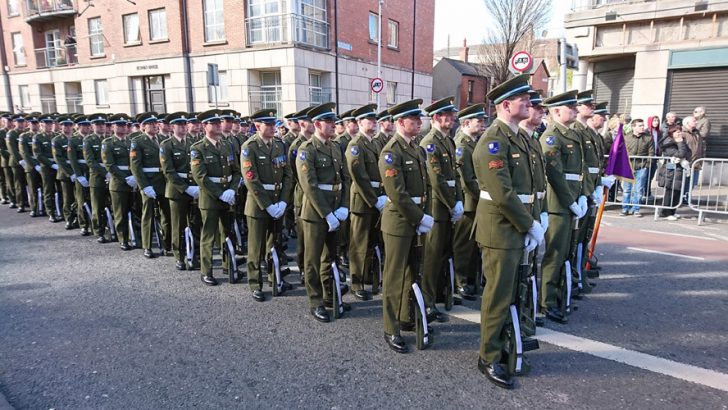Fighting Irish: The Irish Regiments in the First World War
by Gavin Hughes (Merrion Press, €19.00pb, €65.00hb)
This is an account of the Irishmen who fought in the ranks of the British army in World War I. The narrative includes descriptions of some of the killing fields of that horrendous war.
Most of the Irish served in the 10th Irish, 16th Irish and 36th Irish Divisions. Hughes describes in considerable detail the major engagements in which they participated, including the landings at Gallipoli on the Dardanelles in Turkey and the battle of the Somme on the Western Front.
The intervention at Gallipoli was the brain-child of Winston Churchill. During the landings at Suvla Bay and elsewhere and subsequent attempts to secure the adjacent area, members of the Irish regiments were slaughtered in their hundreds. Today, numerous crosses above the water’s edge where they fell, is a vivid illustration that they were essentially ‘cannon fodder’. This was their role also in the battle of the Somme.
Irishmen also fought in Mesopotamia, the land of Cain and Abel, where the conflicts of the Great War have been revived so savagely in recent years.
The author provides a chapter on ‘The battle of Dublin’ in 1916 and notes that the casualties of the Easter Rising were 500 people killed and 2,500 wounded, whereas for that one, same week the casualties of the 16th Irish Division on the Western Front were 570 men killed and 1,400 wounded.
He sets out what he refers to as the ‘butcher’s bill’ at the end of the war as follows: mainly on the continent of Europe in Irish and other regiments 210,000 Irishmen fought during the years 1914-1918 and subsequently the Irish War Dead was officially calculated to have been some 35,000. The regiments with the highest death rates were the Royal Irish Rifles (6,920), Royal Inniskillings (5,772) and Royal Dublin Fusiliers (4,778). But these figures hardly account for Irishmen who were in the ranks of other British regiments, and in colonial and allied armies.
Hughes comments on the disproportionate number of Irish soldiers executed at the Front for desertion and other infringements of discipline. He ascribes this to the tendency of the Irish to be more prone to drunkenness and mutiny than the soldiers of the other home countries! Without a hint of irony, he also states that within Irish regiments the impulse to punish breaches of discipline were harsher due to greater expectations of behaviour!
In this regard he fails to mention the notorious bigoted attitude of the War Office to the commanders and rank and file of the Irish Divisions, except, of course, the 36th (Ulster) Division.
Irishmen generally joined the British army because it was a better option than unemployment and sordid poverty. Some were attracted by the prospect of adventure and postings to foreign lands. There were some patriots who assumed that their involvement in the Great War would expedite Home Rule. On their return home they were to be very soon disillusioned in that regard, an issue not adverted to by the author.
Hughes seeks to promote an interest in the memorabilia and paraphernalia of the Great War: medals, awards, flags, plaques, monuments; even ‘archaeology’ – excavating trenches and recovering buttons, cap badges, bullets, shells etc.
In so doing, he claims that World War I was fought to achieve freedom, independence and for eternal values. While a valid argument can be made that this was true of World War II, World War I was for the statesmen and generals nothing more and nothing less than a conflict of imperial powers.
Historians
This study will be a useful vade mecum for professional military historians. Regrettably it also tends to glorify the futile and senseless slaughter that was World War I, when the real heroes were the conscientious objectors and the pacifists. The book will also be of interest to amateur armchair militarists and will help feed their continued dehumanising of the ‘Great War’.


 Courtney McGrail
Courtney McGrail The Easter Sunday Parade celebrating the 1916 rising
The Easter Sunday Parade celebrating the 1916 rising 